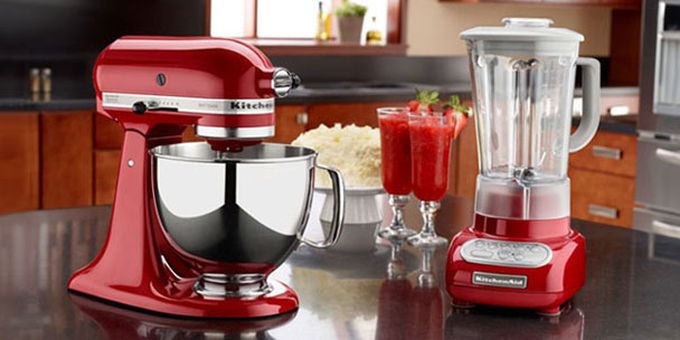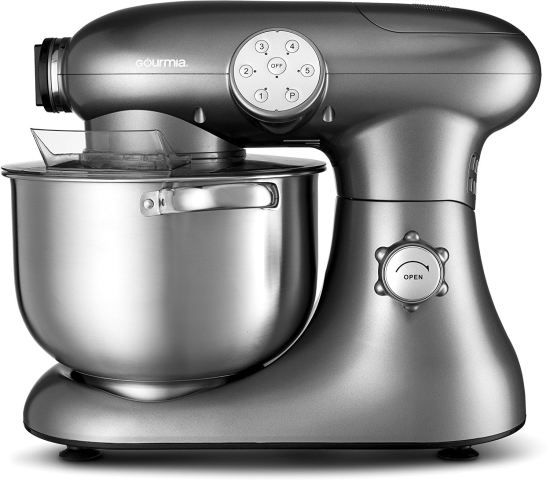For many years mixers are very popular. Today, these devices are an indispensable attribute in almost any kitchen. Of course, manufacturers are trying to meet demand and offer a wide range of different models. Therefore, the choice of a mixer is sometimes difficult due to the wide variety of different types. Of course, choice of a mixer depends on its functionality, that in turn, significantly depends on the set of its attachments. But knowledge of their features also greatly simplifies this task.
Modern mixer provides mixing food ingredients, the kneading (e.g., of dough) and for beating (e.g., of eggs for omelet). Typically, mechanical mixing easy to perform all these functions. Design of a stand mixer is in many respects the same as that of a blender. But the blender additionally provides grinding the ingredients and, therefore, has cutting knives.
Modern mixers are divided on the hand-held, stationary, combined and planetary models.
Hand mixer
Hand mixer is a compact electric device without stand. Therefore, the user must keep it in hand during operation. An electric motor and reducer are embedded into handle. Its housing is usually made of durable plastic. Reducer provides a rotation of two corollas. Trajectories of rotation lobes are intersected in space, but are shifted in phase.
Usually, modern mixer has the several fixed speeds or a smooth adjustment of the engine speed. This device is very easy to use. Moreover, this mixer can use a virtually any vessel for mixing.
Of course, the cost of hand model is significantly lower compared to other types.
Hand mixers typically have little power from 150 to 250 W.
Most modern models are equipped with additional nozzles (for example, for cutting and chopping the fruits and vegetables) and by other additional accessories.
Features of a hand mixer.
1. Mixing container must has sufficient depth to prevent the splashing during operation.
2. Many manual models do not provide kneading heavy dough (for example, for dumplings) due to low power.
3. Cooking puree of whole vegetables (for example, of carrots and potatoes) is also inefficiently due to low power.
4. Hand mixer is well suited for creaming and shaking up from eggs, honey, cream and other similar foods. In addition, it imbues the finished dish by oxygen and gives it lightness.
5. Hand mixer is convenient for preparation of small portioned dishes.
Stand mixer
Stand mixer has a base and a bowl for mixing. The engine usually is built into the base. Devices of this type have a hinged or removable design.
Stand models are well suited for regular cooking in a big family. These mixers are considerably more expensive and take up more space compared to hand models.
Features of stand mixer.
1. Stand mixer operation does not requires physical participation.
2. Their work with a sufficiently strong vibration. Rubber insertions on the bottom eliminates sliding on the table top.
3. The lid on bowl prevents splattering the ingredients. However, filling a bowl should not exceed of 2/3 total volume.
4. Preparation of cocktails in the stand mixer is uncomfortable due to lack of the drain spout in the bowl.
5. Stand models are very convenient for preparation of thick dough and creams in a rather large amount.
6. Some stand mixers support cup rotation function. In this case, the rotated nozzle more effectively mixes foods all over the bowl volume. Respectively, mixing uniformity is increased.
7. Bowls of stannd models are made of plastic, stainless steel or glass. Plastic is light and inexpensive, but is exposed to deformation. Glass and stainless steel are more hygienic and durable materials.
Combined mixer
Combined mixer actually is stand model with a removable mixer. It can be used with its own bowl or with any other cookware in mode of hand mixer. This greatly increases its usability. In fairness, almost all modern models have this option and can be positioned as combined. Usually it`s done by pressing the button. The possibilities of such a model can be seen in the video at the end of the article.
Planetary mixer
Nozzles in planetary models additionally revolve around the bowl axis. Such a complicated rotation around its own axis and axis of bowl simulates the rotation of planets around the sun. Therefore, these models are called planetary. Today it’s the most effective way of mixing. This algorithm is mainly used in commercial models. Household planetary mixers are also available on the market. But their cost is higher compared to traditional stand models.



